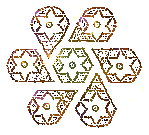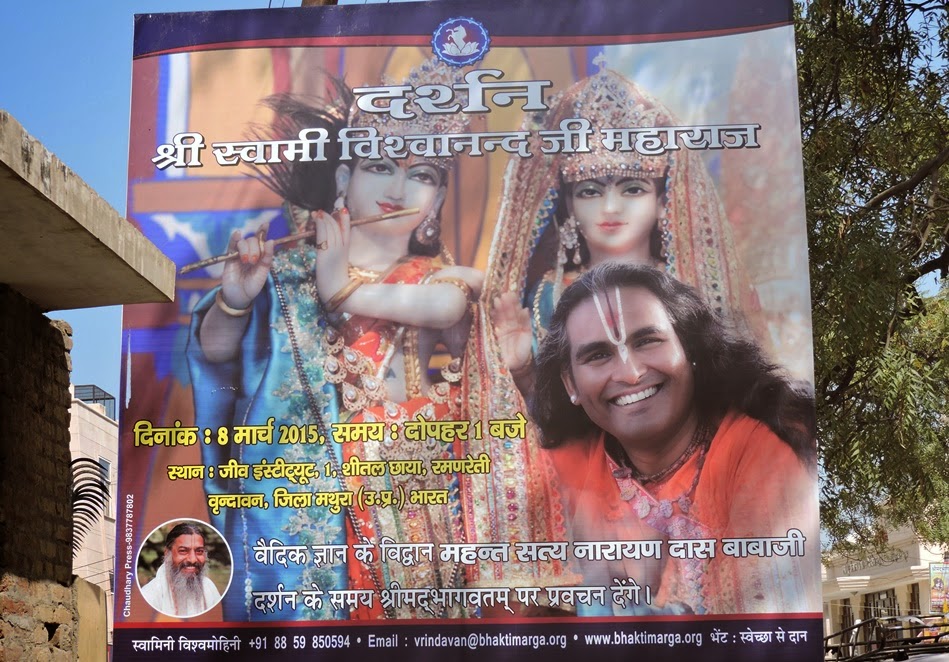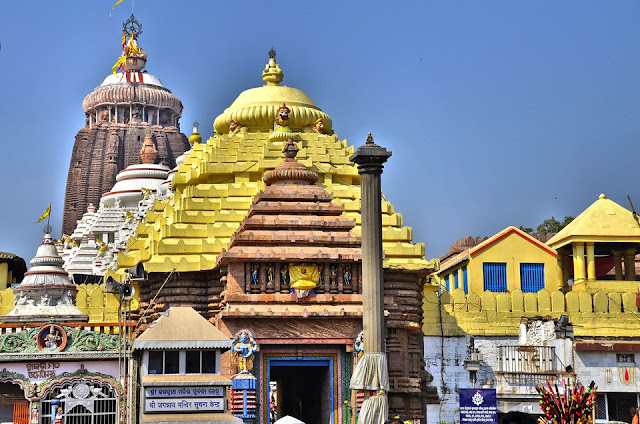SKK 1a: Janma-khanda
Altogether, SKK contains 13 chapters, which I would call pālās, or programs for performance. These have only limited connection to the familiar Puranic accounts of Krishna’s life, hence their great interest. Some of these themes, such as dāna, have subsequently found their way into the Sanskrit literature. All have continued to find a place in the popular Bengali līlā-kīrtana.
Here are the names of the chapters and a brief description of the contents:
The story of two hairs, which is nowhere mentioned in the Bhāgavatam, is given some prominence here, betraying Chandi Das' primary indebtedness to Harivaṁśa and Viṣṇu-purāṇa as his Puranic sources. So even if there is at least some possibility of a Bhāgavata influence, there is no thought given to kṛṣṇas tu bhagavān svayam.
Here are the names of the chapters and a brief description of the contents:
- Janma-khaṇḍa (the reasons for Krishna’s incarnation, etc.);
- Tāmbula-khaṇḍa, (Krishna offers Radha pan through Baḍāi, which Radha refuses);
- Dāna-khaṇḍa, (Krishna waylays Radha on the road and demands toll fees);
- Naukā-khaṇḍa, (Krishna poses as a boatman, taking Radha across the Yamuna);
- Bhāra-khaṇḍa, (Krishna poses as a laborer to carry Radha's wares to market)
- Chatra-khaṇḍa, (a supplement to the previous. Very incomplete. Radha asks Krishna to hold a parasol for her, which he refuses to do without compensation);
- Vṛndāvana-khaṇḍa, (This chapter has elements derived from both the Gīta-govinda, with Radha showing māna for the first time, and the Rāsa-līlā)
- Yamunā-khaṇḍa, Kāliya-damana-khaṇḍa, (Krishna wants to do jala-keli in Kaliya-daha, but of course he has to get rid of Kāliya first. Radha openly reveals her attachment to Krishna.)
- Yamunā-khaṇḍa, Vastra-haraṇa-khaṇḍa. (The stealing of clothes. Contextually quite different from BhP version.)
- Hāra-khaṇḍa, (Radha complains to Yashoda that Krishna has not returned her necklace. Yashoda chastizes Krishna and he lies to get out of the situation.)
- Bāṇa-khaṇḍa, (Krishna shoots Cupid's arrow at Radha out of anger that she has told on him.)
- Vaṁśī-khaṇḍa, (Krishna plays flute. Now she is fully in love with him and seeks him out. He plays flute and she leaves her sleepiug husband to go and find Krishna, but does not find him. Baḍāi tells her to steal the flute by giving Krishna a sleeping pill. Radha eventually returns the flute and the two make up.
- Rādhā-viraha, Krishna disappears and only after some time is it known he has gone to Mathura. Radha's separation and distress are vividly described.
Janma-khaṇḍa
The first section of SKK is called Janma-khaṇḍa. There are only seven songs in it, as the first two folios have gone missing. So we arrive late to a program that has already begun to find Bhumi complaining about Kamsa to the gods, who then go to Narayan and pray for help.The story of two hairs, which is nowhere mentioned in the Bhāgavatam, is given some prominence here, betraying Chandi Das' primary indebtedness to Harivaṁśa and Viṣṇu-purāṇa as his Puranic sources. So even if there is at least some possibility of a Bhāgavata influence, there is no thought given to kṛṣṇas tu bhagavān svayam.
[BhP 1.3.28. For an extended discussion of the "two-hairs problem"
one should look at Kṛṣṇa-sandarbha 29. References to the black and white
hairs plucked from Nārāyaṇa's head becoming his incarnations as Krishna and
Balaram are found first in Mahābhārata 1.189.31-32.]
Since the influence of the Gīta-govinda can be detected in SKK (not only in the Vṛndāvana-khaṇḍa, but in several songs that are almost direct translations), it is a good question to ask why this clear position of Jayadeva, who clearly takes the position that the ten incarnations are all incarnations of Krishna, is not followed here.
Basanta Ranjan Ray does not seem to have inquired exhaustively into Chandi Das's sources. In particular, he does not seem to have discriminated between the various Sanskrit sources, like Garga-saṁhitā, Brahma-vaivarta-purāṇa, Brahmāṇḍa-purāṇa, etc., many of which are in all likelihood later than Chandi Das and may even be influenced by him, or at least by other contemporary folk sources.
Songs 2-3 are about Narada Muni coming and telling Kamsa that Devaki's eighth child would put an end to his life. Chandi Das takes great delight in describing Narada's antics, which are a familiar theme throughout works not influenced by the Bhāgavata . (At least I am speculating that Chandi Das did not have the Bhāgavata to hand.) HV 2.89.23-27 has such a description of Narada.
Since the influence of the Gīta-govinda can be detected in SKK (not only in the Vṛndāvana-khaṇḍa, but in several songs that are almost direct translations), it is a good question to ask why this clear position of Jayadeva, who clearly takes the position that the ten incarnations are all incarnations of Krishna, is not followed here.
Basanta Ranjan Ray does not seem to have inquired exhaustively into Chandi Das's sources. In particular, he does not seem to have discriminated between the various Sanskrit sources, like Garga-saṁhitā, Brahma-vaivarta-purāṇa, Brahmāṇḍa-purāṇa, etc., many of which are in all likelihood later than Chandi Das and may even be influenced by him, or at least by other contemporary folk sources.
Songs 2-3 are about Narada Muni coming and telling Kamsa that Devaki's eighth child would put an end to his life. Chandi Das takes great delight in describing Narada's antics, which are a familiar theme throughout works not influenced by the Bhāgavata . (At least I am speculating that Chandi Das did not have the Bhāgavata to hand.) HV 2.89.23-27 has such a description of Narada.
In song 4, Kamsa starts killing Devaki's children. Then Vishnu's two hairs are placed in her womb. Balaram is transfered to Rohini's womb and Devaki is thought to have had a miscarriage. Then Krishna appears in her womb, armed with the weapons (conch, chakra, mace and bow) in his four hands.
Song 5 is about Krishna's birth and removal to Vrindavan. Kamsa tries to kill Yashoda's girl child, who Vasudeva (Basula) has brought back with him. She tells him that Krishna is at Nanda's house, growing up so that he can kill Kamsa one day. Kamsa sends Putana and Krishna kills her. Then he reverses the two arjuna trees, and then kills Keshi. These are the only demons mentioned here.
[All three stories are found in Hari-vaṁśa, but the killing of Keśī
finds its rightful place in all three synoptic Krishna accounts as immediately
preceding Akrūra's arrival, so usually the last demon killed before his
departure for Mathura.]
This song also has a nice description of Krishna's beauty in more or less standard form.
Song 6 says that the gods called Lakshmi to tell her to descend so that Krishna can have sambhoga with her. She is born of father Sagara and mother Padma.
rati-rasa-kāma-dohanī
śirīṣa-kusuma-koṁalī
adabhuta kanaka putalī
Enchanting the people of the three worlds,The gods arrange for her to be married to the eunuch Aihan. The editor mentions the story, without giving its source, that Aihan worshiped Narayan in order to have Lakshmi as his wife. Narayan granted him the wish, but Lakshmi stipulated that he was to have no sexual relations with her. So he was incapacitated in that regard.
she gives everyone the desire to engage in lovemaking.
She is as soft and gentle as the sirish flower,
an amazing golden figure.
Song 7. The only other major participant in the action of SKK is Baḍāyi, which means simply "maternal grandmother" (baḍā + āyi). Buḍhimā is another appellation. This song also describes her physically as a "hag" in the kind of comical way ("breasts hanging down to her navel") that Nityananda played her in the Chaitanya Bhagavata play at Chandrashekhara's house. In character as well as appearance, she also fits in the kuṭṭanī tradition that is found in texts like Damodara's 9th century Kuṭṭanī-matam or 11th century Kshemendra's Samaya-mātṛkā. (Follow the link for more info.] Though she occasionally shows some signs of wisdom or kindness, on the whole, Baḍāi is something of a problematic character in the story, as we shall have occasion to see.
Chandi Das mentions that she is Aihan's paternal grandmother, his mother's Pishima. It is through her that the marriage is arranged. So Baḍāi seems to most closely equate with Mukhara in Rupa Goswami, but her character is partly shared by Paurnamasi also. In song 6 of Tāmbula-khaṇḍa, Baḍāi says to Krishna: ajoḍa joḍana āhme koribāk pāriṁ: "I can do the impossible." Which sounds a little like Yogamaya's aghaṭana-ghaṭana-paṭīyasī. Mukhara is generally played for a bit of a fool in Rupa.
Aihana's mother entrusts Radha to Baḍāi and asks her to keep her under her wing. The chapter ends with two Sanskrit verses that say now Baḍāi will take Radha off to the market.




Comments